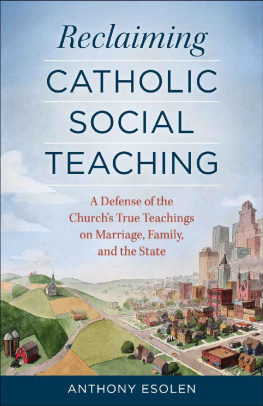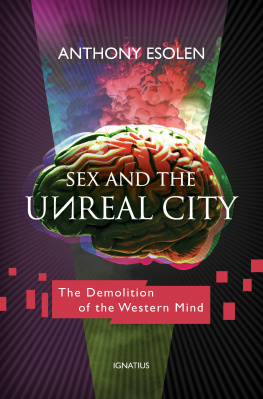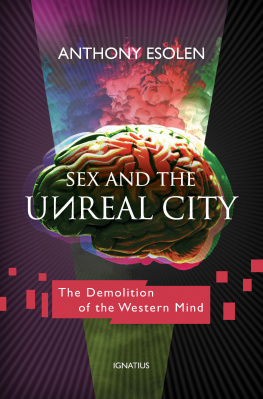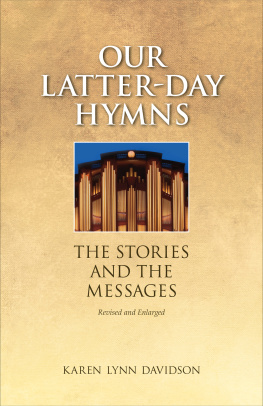Anthony Esolen - Real Music: A Guide to the Timeless Hymns of the Church
Here you can read online Anthony Esolen - Real Music: A Guide to the Timeless Hymns of the Church full text of the book (entire story) in english for free. Download pdf and epub, get meaning, cover and reviews about this ebook. year: 2016, publisher: TAN Books, genre: Religion. Description of the work, (preface) as well as reviews are available. Best literature library LitArk.com created for fans of good reading and offers a wide selection of genres:
Romance novel
Science fiction
Adventure
Detective
Science
History
Home and family
Prose
Art
Politics
Computer
Non-fiction
Religion
Business
Children
Humor
Choose a favorite category and find really read worthwhile books. Enjoy immersion in the world of imagination, feel the emotions of the characters or learn something new for yourself, make an fascinating discovery.

- Book:Real Music: A Guide to the Timeless Hymns of the Church
- Author:
- Publisher:TAN Books
- Genre:
- Year:2016
- Rating:4 / 5
- Favourites:Add to favourites
- Your mark:
- 80
- 1
- 2
- 3
- 4
- 5
Real Music: A Guide to the Timeless Hymns of the Church: summary, description and annotation
We offer to read an annotation, description, summary or preface (depends on what the author of the book "Real Music: A Guide to the Timeless Hymns of the Church" wrote himself). If you haven't found the necessary information about the book — write in the comments, we will try to find it.
Real Music: A Guide to the Timeless Hymns of the Church — read online for free the complete book (whole text) full work
Below is the text of the book, divided by pages. System saving the place of the last page read, allows you to conveniently read the book "Real Music: A Guide to the Timeless Hymns of the Church" online for free, without having to search again every time where you left off. Put a bookmark, and you can go to the page where you finished reading at any time.
Font size:
Interval:
Bookmark:
A Guide to the Timeless
Hymns of the Church
Anthony Esolen
TAN Books
Charlotte, North Carolina
Copyright 2016 Anthony Esolen.
All rights reserved. With the exception of short excerpts used in articles and critical review, no part of this work may be reproduced, transmitted, or stored in any form whatsoever, printed or electronic, without the prior written permission of the publisher.
Cover design by Caroline Kiser
Cover image: Angels Playing Musical Instruments, right hand panel from a triptych from the Church of Santa Maria la Real, Najera, c.1487-90 (oil on panel), Memling, Hans (c.1433-94) / Koninklijk Museum voor Schone Kunsten, Antwerp, Belgium / Bridgeman Images.
Author portrait by Chris Pelicano
ISBN: 978-1-61890-702-8
Published in the United States by
TAN Books
P. O. Box 410487
Charlotte, NC 28241
www.TANBooks.com
Printed and bound in the United States of America.
Chapter One
The Psalms
Chapter Two
Who Is Jesus?
Chapter Three
Who Is Christ?
Chapter Four
The Nativity
Chapter Five
The Cross and the Resurrection
Chapter Six
Our Love for Jesus
Chapter Seven
The Holy Eucharist
Chapter Eight
The Holy Spirit
Chapter Nine
Penitence and Supplication
Chapter Ten
The Church Militant
Chapter Eleven
Consolation
Chapter Twelve
The Glory of God
T HE Church has blessed us with a rich heritage of sacred music to beautify the Sacred Liturgy, to elevate our minds, and to enrich our souls. As St. Augustine teaches us in the City of God, beauty is a good gift from God. Thus, it is crucial that we worship Him with our best music, because the Liturgy is the most beautiful confession of the true faith (Pope Sixtus V). Lest we diminish the beauty of the Holy Sacrifice of the Mass by singing pseudo music that is substandard or profane, we must insist on the sacred nature of the Liturgy by presenting to the Lord real musica musical offering that is true, good, and beautiful. When music beautifies the Liturgy in this manner, how much more easily is the soul able to enter into intimacy with God. Thus does true sacred music unveil the beauty of holiness (Ps 96:9).
While Gregorian chant and sacred polyphony rightly enjoy pride of place in the music of the Liturgy, our Holy Mother the Church also exhorts us to raise a fitting melody unto the Lord by singing psalms, and hymns, and spiritual canticles (Eph 5:19). The hymns we sing should be a window to the sacred, ushering us into an atmosphere of prayer where the human soul can inhale inspiration from the Holy Spirit. The great hymn-writers of the past, from St. Ambrose to Father Faber, and from Prudentius to G. K. Chesterton, penned their finest hymns with rich allusions to Sacred Scripture and theology. These timeless hymns, the fruit of prayer and mystical contemplation, still inspire us and teach us the Faith. They have stood the test of time.
In the following pages, Anthony Esolen shows how these carefully selected hymns, like gems in the treasure chest, combine the best of poetry with doctrinally sound lyrics and beautiful melodies. As we restore the tradition of singing real music to beautify the Sacred Liturgy, we ought to let the Lord make beautiful music in us, so that our lives might be a living sacrificea beautiful hymn unto God for He is the Divine Maestro!
Rev. Scott A. Haynes, S.J.C.
Director, St. Cecilia Choir
St. John Cantius Church, Chicago
T HE King James Version is not a canonical text, and its modern printings omit the deuterocanonical books. (These were once included at the back as salutary reading; Anglican churchgoers were well aware of them.) But as an English translation, it is incomparable for its beauty and its influence upon English poets and hymnodists. I will be using it throughout, for the simple reason that the authors of the hymns used it, or had its phrasings and its rhythms in mind when they wrote. It will help us see and hear what the poets were doing, and I hope that will in turn inspire Catholic poets, using more authoritative versions of Scripture, to go and do likewise.
S IMILARLY, we carefully chose our subtitleA Guide to the Timeless Hymns of the Churchto highlight the catholicity of the hymns in both the uppercase and lowercase senses of the term. This despite the fact that many of the hymns included were written or translated by non-Catholics and are staples in non-Catholic hymnals. The great hymns, through their orthodox expressions of creedal doctrine, remind us of how much we have in common with our separated brethren. However, as many mainline denominations drift further and further from the faith of their fathers, it may give one pause to wonder how many non-Catholic hymnodists could or would produce such work today. Do the Methodist and Anglican hymnodists of the twenty-first century believe as Wesley and Neale did? It is in this sense that we humbly submit this work as an effort in ecumenism in the hope that all Christians may sing as one.
In order to derive the most benefit and enjoyment from the book and CD, we recommend that you listen to the hymns after or while reading them. The appendix at the back of the book includes a list of hymns by chapter and those that are on the CD are noted by track number. Enjoy!
H E who sings prays twice, says St. Augustine.
See that panel on the front of the altar, said my friend, the priest, pointing to a wooden relief sculpture of the Lamb of God. You wont believe where I found it. It was in the basement of a tavern. It had been torn out of some church somewhere, and I have no idea how it ended up where it did. We asked for it for the church here. If you look hard you can faintly see a seam across the sculpture where it had been split in two, Father explained. The rest of the church was grand, filled with impressive works of art in stone and glass. The parish was too poor in the 1970s to afford any renovation, but the art survived, he said.
Richer parishes were not so fortunate. My own home church, Saint Thomas Aquinas, was built by Irish coal miners in the nineteenth century. They built a large neo-Romanesque structure, one great barrel vault without internal supports. The ceiling, entirely open, was covered with paintings executed by an Italian they hired and brought over from Europe. No square foot was left blank, not even the area between the stained glass windows and the arc of the ceiling. There were painted medallions of ten of the twelve apostles, five on each side, with large hanging medallions of St. Peter and St. Paul in the sanctuary. The background was a warm, muted purple, decorated with golden fleurs-de-lis.
But the wave of New Iconoclasm hit. Most of the ceiling survived, but Peter and Paul disappeared, leaving the church in the absurd position of commemorating the Ten Apostles, bereft of their chief and of the great apostle to the Gentiles. The delicate background was painted over in icy white. The marble communion rail and the great altar met the jackhammer. The organ in the loft was removed, and no one knows in what landfill its hundreds of pipes have been crushed.
Almost every parish in the United States and Canada has such a story to tell. A priest instructs workmen to take away the statues of saints and throw them in the pond. A bishop orders the removal of wooden pews boasting hand-carved reliefs of the local Appalachian flora and fauna. What is harder to notice, though, is that the same rage for reduction and removal did its work on the very prayers of the Church. It is easy for someone to notice the emptiness of a large sanctuary whose dimensions were set precisely for the altar that used to be there. It is harder to notice words no longer spoken, or melodies no longer heard.
Font size:
Interval:
Bookmark:
Similar books «Real Music: A Guide to the Timeless Hymns of the Church»
Look at similar books to Real Music: A Guide to the Timeless Hymns of the Church. We have selected literature similar in name and meaning in the hope of providing readers with more options to find new, interesting, not yet read works.
Discussion, reviews of the book Real Music: A Guide to the Timeless Hymns of the Church and just readers' own opinions. Leave your comments, write what you think about the work, its meaning or the main characters. Specify what exactly you liked and what you didn't like, and why you think so.









